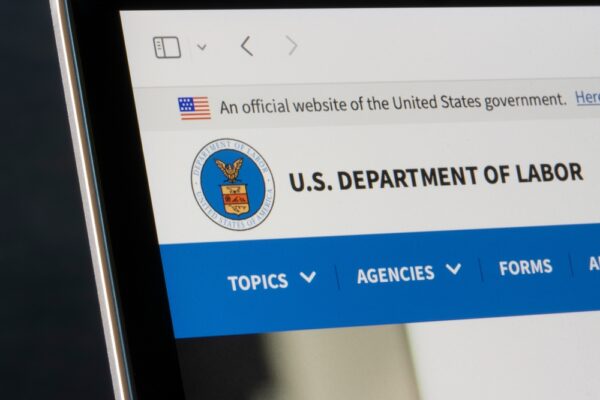In January 2024, the U.S. Department of Labor (DOL) finalized a rule redefining how companies must determine whether a worker is an employee or an independent contractor under the Fair Labor Standards Act (FLSA). The rule, which took effect March 11, 2024, replaces the 2021 guidance and reintroduces a more comprehensive economic reality test — one that complicates classification decisions for organizations managing contingent or project-based talent.
This change carries significant implications for staffing, compliance, and workforce strategy. Misclassification exposes organizations to back pay and benefit claims, placing them at risk of federal investigations and class-action lawsuits. Achieving compliant worker classification in this new environment requires a more rigorous, multidimensional approach that accounts for legal, operational, and financial factors.
2024’s DOL rule for compliant worker classification
The DOL’s 2024 Final Rule reinstates the six-factor economic reality test that courts have traditionally used to determine whether a worker is economically dependent on the employer (i.e., an employee) or is operating their own business (i.e., an independent contractor). This test is holistic, meaning no one factor is determinative — each must be weighed in the context of the working relationship.
The six factors in compliant worker classification:
- Opportunity for profit or loss depending on managerial skill: Considers if a worker’s earnings are tied to their managerial decisions.
- Investments by the worker and the employer: Evaluates the nature and extent of the worker’s investment in relation to the employer’s investment.
- Degree of permanence of the work relationship: Assesses the stability and duration of the working relationship.
- Nature and degree of control: Examines the level of control the employer has over the work performed.
- Extent to which the work performed is an integral part of the employer’s business: Determines how essential the worker’s tasks are to the employer’s core operations.
- Skill and initiative: Looks at the worker’s specialized skills and business acumen.
While these may seem straightforward, applying them in real-world scenarios introduces significant complexity. For instance, what constitutes control can vary drastically between industries or even projects. And how integral a role is to the core business depends not only on the nature of the work but also on how the organization is structured. Employers must be prepared to navigate these gray areas with specificity and consistency.

What is compliant worker classification?
Organizations must move away from simple checklist-based classification approaches. The new standard prioritizes the totality of the working relationship. This shift demands a strategy that’s both analytical and dynamic. Rather than relying on fixed templates, compliant worker classification now hinges on organizational ability to interpret nuanced, interdependent factors in real time.
For organizations using contractors, freelancers, or gig workers across departments, classification cannot be handled by HR alone. Legal, procurement, finance, and business unit leaders must be aligned on the classification framework, and that framework must be continuously applied throughout sourcing, onboarding, performance management, and offboarding. Otherwise, classification decisions become inconsistent, increasing risk exposure.
Common misclassification triggers
Many misclassification issues stem from oversimplified assumptions or inconsistent execution across business units. Key triggers include:
- Overreliance on job titles: Simply labeling a role as “contractor” does not suffice. Courts and regulators will examine the actual nature of the working relationship — tasks, supervision, expectations, and integration into business operations.
- Misinterpreting autonomy: Flexibility in setting work hours does not equal independence if the company dictates work methods, schedules deliverables, or monitors performance metrics.
- Neglecting integration: Workers performing tasks indistinguishable from those of employees, or reporting to employee managers, are likely to be considered employees regardless of contractual language.
- Ignoring permanence: Long-term engagements, especially those with exclusive relationships, suggest economic dependence — a key factor in determining employee status.
These triggers are not hypothetical — they’re based on frequent findings in federal and state misclassification audits. Ensuring compliant worker classification means assessing not just what’s on paper but how the relationship plays out in day-to-day operations.

How to ensure compliant worker classification
Achieving compliance is not a one-time legal review — it’s an ongoing operational discipline. Companies should consider the following strategic investments:
- Cross-functional classification committees: Classification is rarely black-and-white. Committees that bring together legal, HR, procurement, and finance can apply the six-factor test with consistency and organizational context. These committees also provide a governance structure for resolving ambiguous cases, documenting rationale, and ensuring decisions are aligned across functions.
- Employer of record (EOR) services: For roles that fall into legal gray areas — or for companies lacking internal compliance infrastructure — EOR solutions offer a reliable path to compliant worker classification. The EOR assumes the legal responsibility of employment, ensuring accurate tax withholding, benefits administration, and adherence to local labor laws.
- Classification risk audits: Proactively auditing current contractors can surface hidden risk — especially where long-term engagements have evolved beyond their original scope. These audits should not just flag misclassifications but include plans for remediation, including contract revisions, reclassification, or transitioning to EOR-supported arrangements.
- Contract and policy standardization: Contracts should go beyond boilerplate. They should be tailored to reflect the specific structure of the working relationship and reviewed in tandem with role expectations and operational practices. Include clauses that define scope, project-based deliverables, independence of decision-making, and restrictions on exclusivity.
- Tech-enabled oversight: Modern workforce management systems can surface indicators of misclassification risk. For example, repeated extensions of temporary contracts, provision of internal email addresses, or assignment of company assets may suggest employee-like relationships. System-level tracking of these factors can alert compliance teams in real time.
Compliant worker classification across state lines and jurisdictions
Navigating classification rules across jurisdictions is increasingly complex. Many states are not just stricter — they’re also more aggressive in enforcement. California’s ABC test, for example, creates a presumption of employment that is difficult to overcome without precise structuring of the contractor relationship.
A compliant worker classification strategy must:
- Map labor classification standards in every active jurisdiction.
- Design workflows to account for localized requirements from onboarding to termination.
- Reassess classification decisions when expanding into new states or launching new projects.
- Provide HR and legal teams with updated guidance on local compliance standards.
Without these layers of control, organizations risk inconsistent application of standards — a red flag for regulators.
Costs of noncompliant worker classification
The financial consequences of misclassification are significant, but they’re not the full picture. Companies that are flagged for misclassifying workers face a ripple effect:
- Delayed initiatives as talent pipelines are disrupted or projects are paused during audits
- Talent churn from reputational fallout among freelancers and contingent labor
- Vendor risk when subcontractors or staffing partners introduce misclassification liabilities
- Reduced competitiveness in RFPs or partnerships due to perceived noncompliance
These downstream effects make compliant worker classification a board-level concern — not just a legal or HR function. Companies that treat classification reactively are ultimately less agile, less trusted, and less resilient.

Prioritize compliant worker classification with Maslow
At Maslow, we help companies navigate the complexities of compliant worker classification with confidence. Our Employer of Record (EOR) and contingent workforce solutions are designed to mitigate classification risk, accelerate hiring, and scale operations compliantly.
Unlike transactional vendors, we build compliance into the design of every workforce program. From initial role definition to audit-ready documentation, our solutions are tailored for operational precision and regulatory resilience.
Whether you’re scaling across state lines, launching new projects, or reassessing legacy contractor relationships, we can help you minimize classification risk and maximize workforce performance.
Stay compliant. Stay competitive.



